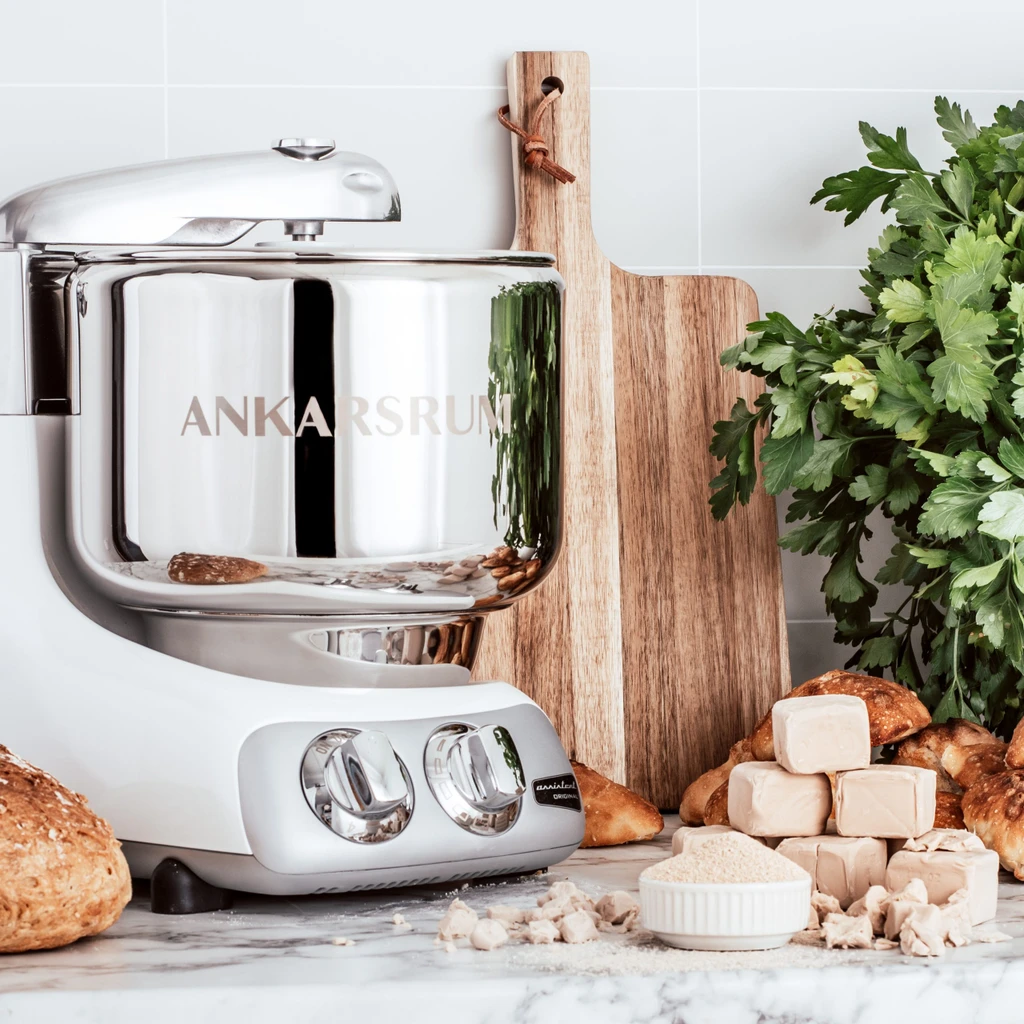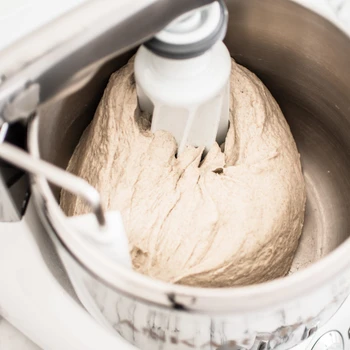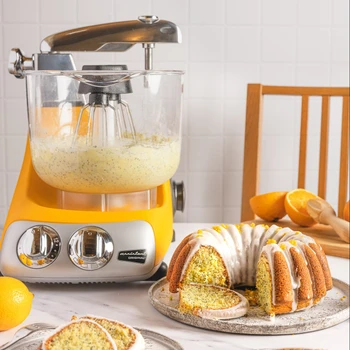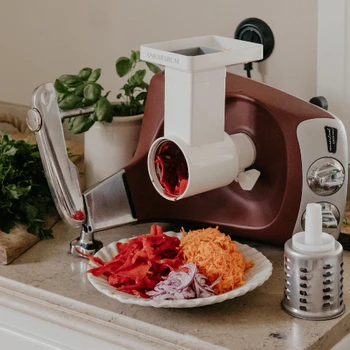Yeast is a single-celled fungus that consists of water, protein, carbohydrates, fats, minerals and B vitamins.
Yeast makes bread expand and gain volume. Yeast also helps bread develop flavors, because flavors are formed during the fermentation process.
During fermentation, yeast consumes the part of the flour starch that has been converted to malt sugar in the dough. The starch also produces gas bubbles of carbon dioxide. The gas bubbles cause the dough to rise and increase in volume.
When the bread is baking, the yeast dies, but the bread continues to grow because the gas bubbles remain in the dough. For best results and bread texture, the bubbles should be small and evenly distributed throughout the dough.
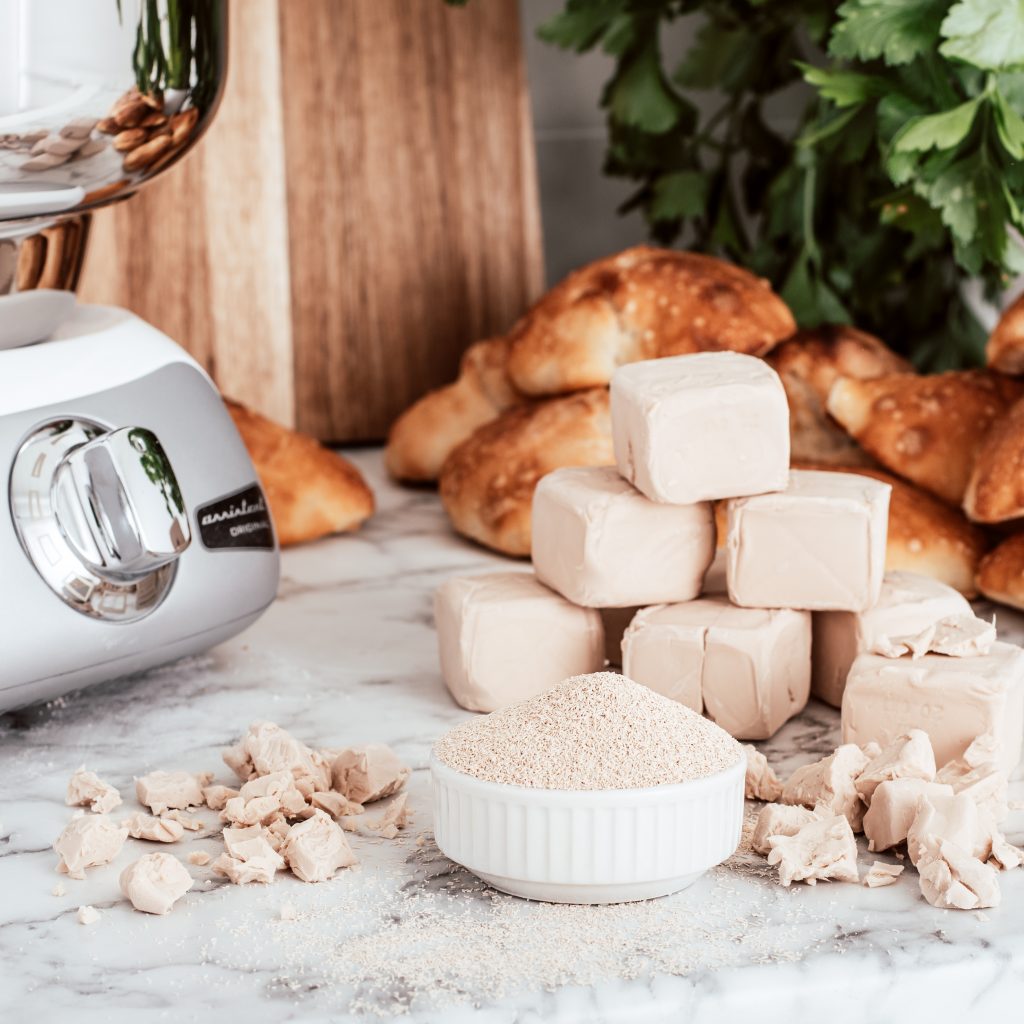
Fresh yeast
Fresh yeast is a live mushroom that must be stored in the refrigerator, max 46° F.
For bread recipes, fresh yeast is dissolved in lukewarm dough liquid*, approx. 98° F, before remaining ingredients are added. At 122° F or hotter, the yeast will die
During cold fermentation, the amount of fresh yeast is reduced, and the dough liquid should be approximately 50° F. The amount of yeast needed for cold fermentation is about half the amount needed for traditional fermentation; the exact amount depends on the fermentation time.
Dry yeast
Dry yeast is stored at room temperature and, unlike fresh yeast, it has a long shelf life.
For bread recipes, dry yeast is first mixed with flour in the bowl and allowed to stand for ten minutes. Then add finger-warm dough liquid, approx. 98° F, along with other ingredients.
During cold fermentation, the amount of yeast is reduced, and the dough liquid should be approximately 50° F. The amount of yeast needed for cold fermentation is about half the amount needed for traditional fermentation; the exact amount depends on the fermentation time.
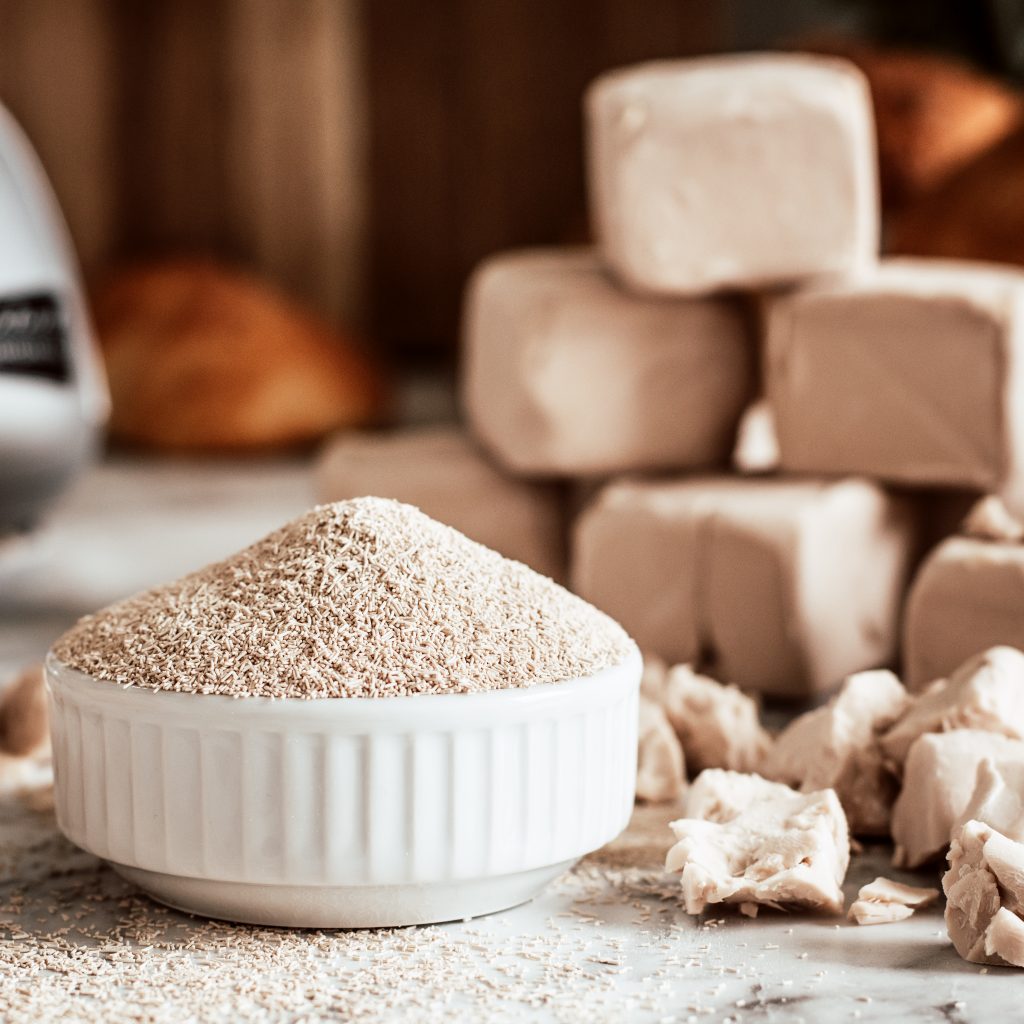
Yeast for sweet doughs
There is a variant of both fresh yeast and dry yeast created for baking sweet breads such as cinnamon buns. Sweet breads are defined as those with dough of more than 2½ tablespoons of sweetener per 400 ml of flour.
Replacing yeast
A packet of fresh yeast (50 g) can be replaced with a bag of dry yeast (14 g). Remember that different yeasts dissolve in different ways.
Temperature
Fresh yeast should be stored in the refrigerator, ideally at 32-39° F, but it can handle temperatures up to 46° F.
The best yeast temperature for a dough is 77-82° F, while dough liquid should be at 98° F. At 122° F, the yeast cells die.
Yeast should not be frozen, as the yeast cells could die.
Storage
Fresh yeast should be stored in the refrigerator; dry yeast at normal room temperature. With the right storage, yeast often lasts much longer than the ”use by” date on the package, but its effect will decrease over time to finally subside completely.
*Dough liquid is the liquid you use when baking, such as water or milk.
